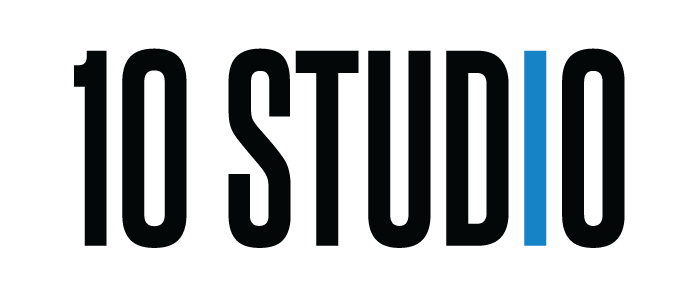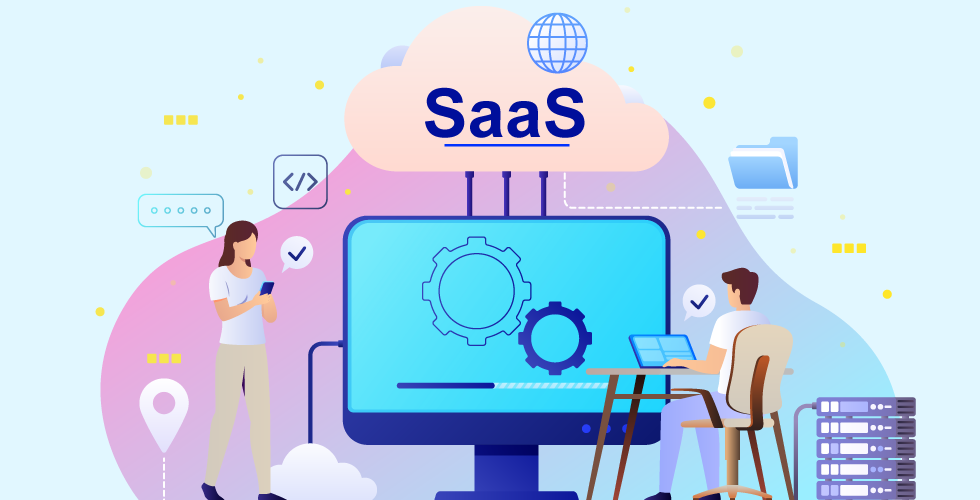The SaaS (Software as a Service) industry is booming from project management tools to customer relationship management platforms, more and more businesses are turning to cloud-based software solutions to streamline their operations and stay ahead of the curve.
But with so many SaaS companies craving attention, how do you make your product stand out in a crowded market? The answer lies in effective SaaS marketing strategies that can attract, engage, and retain customers in the long run.
In this comprehensive guide, we’ll dive deep into the key principles, strategies, and best practices that can help you supercharge your SaaS marketing efforts and drive sustainable growth for your business.
What is SaaS Marketing?
SaaS marketing is all about promoting and selling cloud-based software products that customers access over the internet, usually through a subscription model.
Unlike traditional software, SaaS products aren’t installed on individual computers. Basically, they live in the cloud that can be accessed from anywhere with an internet connection.
Why is SaaS Marketing Different?
SaaS marketing has its unique challenges and strategies that set it apart from regular digital marketing.
- Recurring Revenue Model: With SaaS, your goal isn’t just to make a one-time sale; it’s to retain customers and keep them subscribed for the long haul. This means your marketing efforts need to focus on acquiring new customers and keeping existing ones happy and engaged.
- Low-Touch Sales Process: Many SaaS products are designed for self-service, which means customers can sign up and start using the product without much human interaction. Your marketing needs to be strong enough to guide prospects through the process and convince them to convert.
- Freemium and Free Trial Models: Offering a free version or trial is a common tactic in SaaS marketing. This allows potential customers to experience your product firsthand before committing to a paid plan.
- Product-Led Growth: In the SaaS world, your product is often your best marketing tool. If you can get people to use and love your product, they’ll be more likely to stick around and even spread the word to others.
- Metrics and Data-Driven: SaaS marketing is all about measuring and optimizing key metrics like customer acquisition cost (CAC), customer lifetime value (LTV), and churn rate. Data is your best friend!
SaaS Marketing Terminology Explained
Before we dive into the key principles, let’s quickly go over some common SaaS marketing lingo:
- Customer Acquisition Cost (CAC): The cost of acquiring a new paying customer.
- Lifetime Value (LTV): The total revenue a customer is expected to generate during their lifetime with your product.
- Churn Rate: The percentage of customers who cancel their subscriptions or fail to renew during a given period.
- Conversion Rate: The percentage of visitors or leads that convert into paying customers.
Key Principles of SaaS Marketing
Here are the key principles of SaaS Marketing:
1. Niching Down Before Targeting the Mass Market
Imagine trying to sell your SaaS product to every person in the world. Sounds overwhelming right? That’s why it’s crucial to narrow down and target a specific audience segment.
Define your ideal customer personas – who are they, what are their pain points, and what kind of solutions are they looking for?
Develop a deep understanding of your niche market and what makes them tick, where they hang out online, and what kind of language they use.
2. Leverage Inbound Marketing and Content Marketing
In the SaaS Business inbound marketing and outbound marketing are your best friends. Ask why? Because they help you attract potential customers to your brand organically without being pushy or salesy.
Create valuable and educational content (blogs, videos, webinars, whitepapers) that addresses your target audience’s pain points and questions.
3. Offer Freemium or Free Trial Plans
One of the best ways to get people to try your SaaS product is to offer a freemium or free trial plan.
This lowers the barrier to entry and allows potential customers to experience the value of your product firsthand.
4. Focus on Product-Led Growth
In the SaaS world, your product is often your best marketing tool. That’s why it’s essential to prioritize product-led growth strategies that put your product at the forefront of your marketing efforts.
Continuously improve and iterate on your product based on user feedback and data. Implement user analytics and in-app messaging to drive activation, adoption, and retention.
5. Measure and Optimize Key SaaS Metrics
Remember those SaaS marketing metrics we talked about earlier? Well, they’re not just fancy jargon; they’re essential for measuring the success of your marketing efforts and making data-driven decisions.
Define and track key SaaS metrics like CAC, LTV, churn rate, conversion rates, and activation rates. Moreover, establish benchmarks and goals for each metric based on industry standards and your business model.
6. Leverage Multiple Marketing Channels
Combine various marketing channels like organic search (SEO), paid advertising (Google Ads, social media ads), email marketing, social media, and influencer marketing.
Measure and optimize channel-specific metrics to allocate your resources effectively across different channels. Implement retargeting and remarketing campaigns to re-engage potential customers who have interacted with your brand before.
7. Prioritize Customer Success and Retention
Invest in customer onboarding, education, and support resources to ensure successful product adoption and usage. Plus, implement customer success strategies and proactive outreach to identify and address potential churn risks early on.
Gather customer feedback and use it to improve your product and overall customer experience continuously. Offer incentives, discounts, and loyalty programs to encourage long-term customer retention and advocacy.
Useful SaaS Marketing Tools
To execute your SaaS marketing strategies effectively, you’ll need the right tools in your arsenal.
Here are some popular and useful tools to consider:
- Customer Relationship Management (CRM): HubSpot, Salesforce, Zoho CRM
- Marketing Automation: HubSpot, Marketo, ActiveCampaign
- Email Marketing: Mailchimp, Constant Contact, Sendinblue
- Social Media Management: Hootsuite, Buffer, Sprout Social
- SEO and Content Marketing: Ahrefs, SEMrush, Clearscope
- Analytics and Reporting: Google Analytics, Mixpanel, Amplitude
- User Onboarding and In-App Messaging: Appcues, Pendo, UserGuiding
With the right tools in place, you’ll be able to streamline your marketing processes, automate repetitive tasks, and gain valuable insights to optimize your efforts continuously.
Top SaaS Marketing Channels
Now, that we have covered the key principles, let’s dive into some of the top marketing channels that Saas companies should leverage:
Organic Search / SEO
SEO is crucial for any marketing strategy. By optimizing your website and content for relevant keywords and search queries, you can attract organic traffic from potential customers actively searching for solutions like yours.
Conduct thorough keyword research to identify the most relevant and high-volume search terms in your niche.
Optimize your website’s structure, content, and technical aspects (like site speed and mobile responsiveness) for better search engine visibility.
Social Media
Social media platforms like LinkedIn, Twitter, and Facebook offer excellent opportunities for SaaS companies to connect with their target audience, build brand awareness, and generate leads.
Establish a strong presence on the social media platforms where your target audience is most active.
Share valuable content, industry insights, and behind-the-scenes glimpses of your brand to engage your followers.
Email Marketing
Email marketing remains one of the most effective and cost-efficient channels for SaaS companies to nurture leads, onboard new customers, and retain existing ones.
Build and segment email lists based on user behavior, preferences, and stages in the customer journey.
Create automated email campaigns for lead nurturing, onboarding, product updates, and customer retention.
Influencer Marketing (Focus On Micro-Influencers)
Influencer marketing can be a powerful way to tap into new audiences and leverage the trust and credibility of influential individuals or brands within your niche.
Identify and partner with micro-influencers and individuals with highly engaged and relevant audiences, even if they have a smaller following.
Collaborate on product reviews, sponsored content, or affiliate marketing campaigns that align with your brand and resonate with the influencer’s audience
Measure Channel-Specific Metrics
To ensure the success of your multi-channel marketing efforts, it’s crucial to measure and optimize channel-specific metrics.
Define and track channel-specific metrics like website traffic, social media engagement, email open rates, and conversion rates for each marketing channel.
Analyze the performance of each channel and identify which ones are driving the most qualified leads and conversions for your SaaS business.
SaaS Marketing Metrics to Track
Speaking of metrics, there are several key SaaS marketing metrics that you should be tracking and optimizing for:
- Customer Acquisition Cost (CAC): As mentioned earlier, this is the cost of acquiring a new paying customer. Keeping your CAC low is essential for long-term profitability.
- Lifetime Value (LTV): This represents the total revenue a customer is expected to generate during their lifetime with your product. Ideally, your LTV should be significantly higher than your CAC.
- Churn Rate: This is the percentage of customers who cancel their subscriptions or fail to renew during a given period. Reducing churn is crucial for sustained growth.
- Conversion Rates: These include metrics like visitor-to-lead, lead-to-customer, and free trial-to-paid conversion rates. Optimizing these rates can significantly impact your bottom line.
- Activation Rate: This measures the percentage of new users who actively engage with the core features of your product, indicating successful onboarding and adoption.
- Monthly Recurring Revenue (MRR): This is the recurring revenue your SaaS business generates from subscription fees each month.
- Customer Engagement and Usage Metrics: These metrics provide insights into how your customers are actually using and engaging with your product, helping you identify areas for improvement and growth opportunities.
By tracking and optimizing these key metrics, you’ll be able to make data-driven decisions that drive growth, profitability, and long-term success for your SaaS business.
How to Measure SaaS Marketing?
Now, you might be wondering: How exactly do I measure the success of my SaaS marketing efforts
Here’s a step-by-step guide:
- Define Key Metrics: Start by identifying the most relevant metrics for your SaaS business, such as CAC, LTV, churn rate, and conversion rates. These should align with your overall business goals and growth targets.
- Set Up Tracking and Analytics: Implement tools like Google Analytics, Mixpanel, or Amplitude to track user behavior and marketing performance data across different channels and touchpoints.
- Establish Benchmarks and Goals: Research industry benchmarks and set realistic goals for each metric based on your business model, growth stage, and target audience.
- Analyze and Optimize: Regularly review and analyze your marketing and product performance data, identifying areas for improvement and opportunities for optimization. Make data-driven decisions to refine your strategies and tactics.
- Implement Dashboards and Reporting: Create dashboards and reports that provide real-time visibility into your key metrics, enabling you and your team to monitor progress and make informed decisions on the fly.
By following this process and continuously measuring and optimizing your SaaS marketing efforts, you’ll be able to maximize your return on investment (ROI) and drive sustainable growth for your business.
How to Get Leads for Your SaaS Business?
Generating a steady stream of high-quality leads is essential for the success of any SaaS business.
Here are some proven strategies to help you get more leads in the door:
- Optimize for Organic Search: Implement SEO best practices to rank higher for relevant keywords and attract quality organic traffic to your website. Create valuable, SEO-optimized content that addresses your target audience’s pain points and questions.
- Create Valuable Content: Develop informative and engaging content (like blogs, videos, whitepapers, and ebooks) that provides value upfront and establishes.
- Leverage Paid Advertising: Use paid channels like Google Ads, social media advertising, and retargeting campaigns to reach potential customers who are actively searching for solutions like yours.
- Offer Lead Magnets: Create enticing lead magnets (like free templates, checklists, or webinars) that provide value in exchange for visitor contact information, allowing you to capture leads and nurture them through your funnel.
- Utilize Referral and Affiliate Programs: Incentivize existing customers and partners to refer new leads through referral and affiliate programs, tapping into the power of word-of-mouth marketing.
- Attend Industry Events and Conferences: Participate in relevant industry events, conferences, and meetups to network, showcase your product, and generate leads through face-to-face interactions and demonstrations.
- Partner with Complementary Businesses: Explore co-marketing opportunities with businesses that offer complementary products or services and serve a similar target audience, opening up new channels for lead generation.
Wrapping Up
SaaS marketing can get overwhelming especially when keeping track of. It helps to prioritize the metrics that would matter most in the business.
Measure the brand awareness and see how effectively your marketing efforts would reach potential customers. Make your marketing team gain marketing-qualified leads that hand them over to the sales team for conversion.
One powerful tool for increasing brand awareness and effectively communicating your SaaS product’s value is an animated explainer video.
A well-crafted explainer video can capture your target audience’s attention, simplify complex concepts, and showcase your software’s benefits in an engaging way.
Boost Your SaaS Marketing with 10 Studio’s Animated Explainer Videos
At 10 Studio, we specialize in creating high-quality animated explainer videos that help SaaS businesses stand out in a competitive market.
Our team of experienced animators and storytellers can work with you to develop a compelling video that resonates with your target audience and drives conversions.
If you’re interested in elevating your SaaS marketing with a professional animated explainer video, feel free to explore our portfolio and reach out to us to discuss your project.
We’d be happy to help you create a video that effectively communicates your software’s value and supports your marketing goals.




